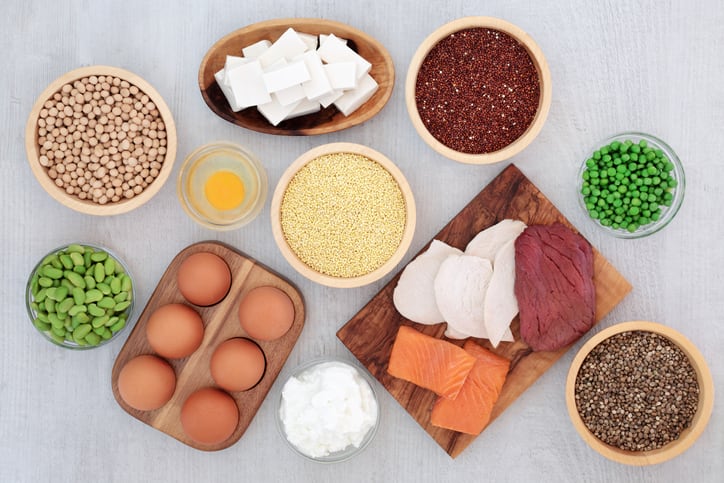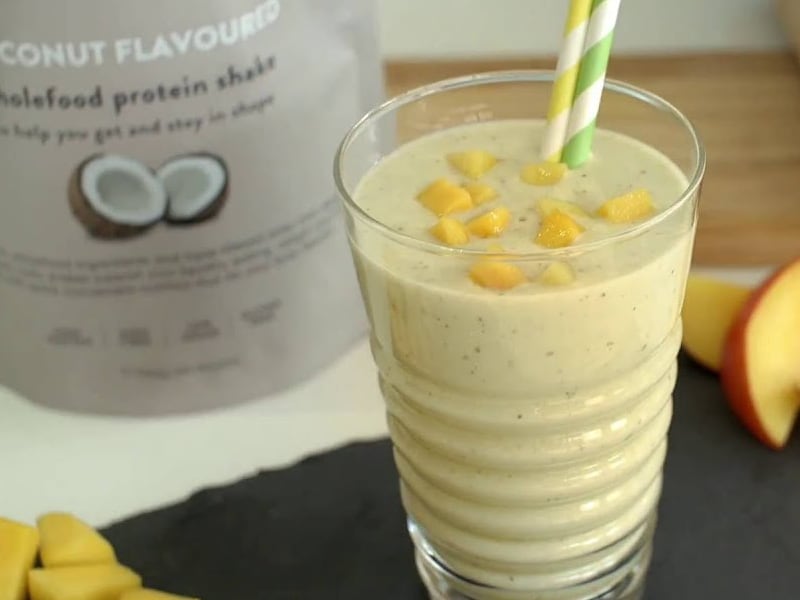It’s well understood that diet makes a significant contribution to global warming and climate change. The number of vegans in the UK has quadrupled since 2006, meaning that there are around 600,000 vegans in Great Britain. And while we know plant-based diets are beneficial for the environment, we don't actually know how healthy these diets are for keeping muscles strong in elderly people.
Dr Oliver Witard, senior lecturer in exercise metabolism and nutrition at King’s College London, gave NutraIngredients a preview to a presentation he will give as part of The Physiological Society's Future Physiology 2020 event for early career researchers this week in which he will discuss which protein sources are the most effective for maintaining and building muscle mass and what are the best options in terms of sustainability in the future.
He explains there are three factors that determine the potential of a protein source to stimulate muscle protein synthesis in older adults.
“First, the digestibility of the protein source determines the bioavailability of amino acids as substrate for the synthesis of new muscle protein.
“Second, the protein source must constitute a complete profile of all nine essential amino acids of which a high leucine content is necessary for a maximal muscle building response.”
The brick wall analogy
Often a brick wall analogy is used to explain the importance of the amino acid profile and leucine content of a protein source for rebuilding muscle protein.
Dr Witard explains: “Muscle protein may be thought of as a brick wall and amino acids as the individual building blocks necessary to build the wall. Each type of wall requires a particular arrangement of these bricks.
“Certain types of bricks, primarily non-essential amino acids, are always lying about and available at the building site.
“However, the wall can only be completed if other bricks, namely a full complement of EAAs derived from a dietary protein source, are transported in from outside the building site.
“The mTORC signalling pathway may be thought of as the builder that puts the bricks together to form the wall.
“Leucine may be considered to be a special brick. It is necessary as part of the wall, but it also comes with a pot of coffee that can stimulate the worker into faster and more effective wall building.
“So, if the truck delivers a protein source constituting a full complement of EAA including a plentiful supply of the red leucine brick, the brick wall will be built effectively and efficiently.”
The EAA profile and leucine content between different protein sources differs greatly between meat, dairy and plant-based protein sources.
The total EAA content of animal-based proteins typically exceeds plant–based proteins. Indeed, whey, milk and casein are the only protein sources with a higher constituent EAA composition compared with human muscle.
Moreover, animal-based protein sources typically boast a complete EAA profile – i.e. containing all 9 EAA, whereas most plant-based protein sources are deficient in 1 or more of the essential amino acids, usually lysine or methionine.
As a general rule, the leucine content of animal-based protein sources is typically greater than plant-based protein sources. An exception to this rule is maize which constitutes 12% leucine. Other interesting plant proteins are lentil and quinoa.
What the science says
Dr Witard says the key is determining the difference between protein sources in terms of anabolic capacity in the context of preserving muscle mass with advancing age. He outlines some of the prior research which has looked into this.
Wilkinson et al (2007, Am J Clin Nutr) studied resistance-trained young men who consumed either fluid skimmed milk or a soy protein beverage immediately following an acute bout of lower-limb resistance exercise. Both drinks contained a “meal-like” 18g dose of protein and were matched for energy content.
The ingestion of milk protein was shown to stimulate a 34% greater response of mixed-MPS during exercise recovery compared with soy protein.
In a follow-up study, Hartman et al (2007 Am J Clin Nutr) demonstrated that the superior acute response of MPS to milk ingestion versus soy translated into greater chronic improvements in lean body mass after a 12 weeks of resistance training.
Dr Witard expands: “The greater anabolic response to milk compared with soy protein ingestion was likely mediated by several factors, namely the greater total protein digestibility, the superior EAA profile and leucine content of milk, and the more favourable metabolic fate of milk protein-derived amino acids being directed towards the peripheral tissues rather than being taken up the by the gut as has shown to be the case with soy protein.
“And there is evidence that the whey component of milk is primarily responsible for the greater anabolic response to milk ingestion compared with soy, this time in studies conducted in older adults.”
Burd et al (2008, Br J Nutr) demonstrated that ingestion of around 20 grams of whey protein stimulated a greater response of MPS both at rest and during exercise recovery, compared with a matched dose of micellar casein protein.
Gorissen et al (2016 Ju Nutri) demonstrated that the ingestion of micellar casein protein stimulated a greater resting postprandial response of myofibrillar protein synthesis compared with whole wheat protein or wheat hydrolysate.
Dr Witard summarises: “The general consensus is that the ingestion of animal-based proteins, in particular dairy proteins, are more potent in terms of stimulating MPS during exercise recovery compared with plant-based proteins.”
However, the senior lecturer explains this statement is limited to the comparison with only two plant proteins - soy and wheat.
In fact, a University of Exeter study, published in American Journal of Clinical Nutrition, found that following a workout, participants who consumed mycoprotein – a meat replacement ingredient containing all nine essential amino acids – experienced greater post-exercise muscle protein synthesis rates than those that consumed milk protein.
What’s the best source of protein for the future?
Dr Witard concludes, on a gram-for-gram basis, dairy and meat proteins are more potent than soy and wheat proteins for stimulating muscle protein synthesis.
“Simply transitioning from an animal-based protein diet to a plant-based diet, without adjusting total protein intake, will likely to be detrimental to muscle health during ageing. A more balanced and less extreme approach to changing dietary behaviour, meaning eating both animal and plant-based proteins, is best.”
He adds that a recent analysis of the EAA and leucine content of different isolated proteins (Amino Acid 50: 1685-1695, 2005) suggests that corn and potato protein sources maybe worthy of investigation.
“At the risk of opening a can of worms, a similar gap in knowledge exists for insect-based sources of protein. Based on amino acid profile, beetles, ants and termites are promising sources.”
Macdiarmid et al (2012, Am J Clin Nutr 96:632-9) utilised linear programming to model the level of dietary changes that would be required to achieve dietary requirements for health according to NDNS and meet target reductions in GHGE derived from dietary means.
They concluded that a balanced rather than extreme approach appears to be possible, i.e. a sustainable and healthy diet can be achieved without completely eliminating meat and dairy from the UK diet.
“I think we will see more and more data coming out that model existing knowledge regarding human physiology outcomes (such as muscle health), nutrition and sustainability with a view to devising recommendations that account for both health and sustainability.”



